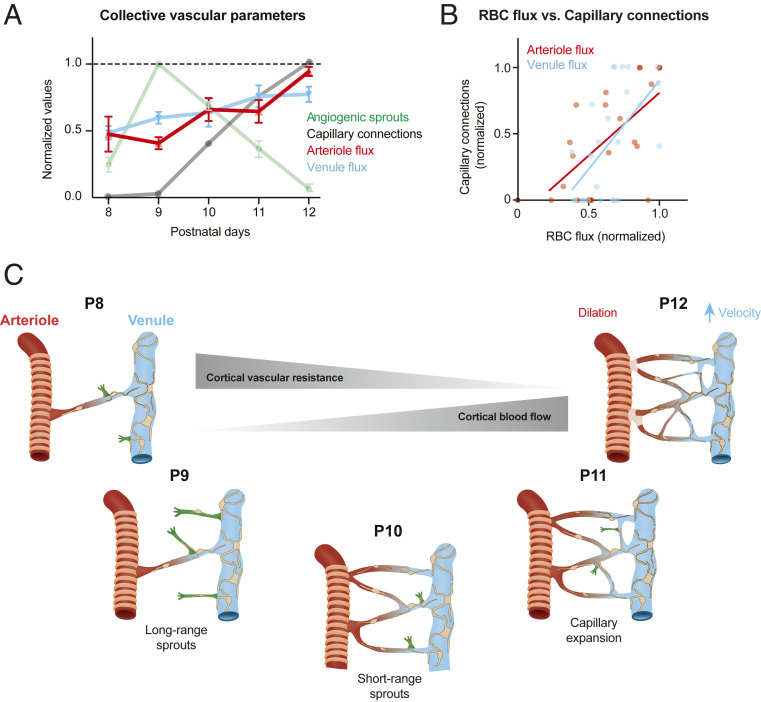Fig. 7.
Impact of capillary bed growth and expansion on blood flow. (A) Compendium of structural and blood flow changes over time, normalized for comparison. (B) Correlation between number of new capillary connections and the flux of penetrating arterioles and ascending venules. All postnatal time points are included. Pearson’s correlation: Arterioles: R2 = 0.4765, P = 0.0001; n = 25 penetrating arterioles from five mice. Venules: R2 = 0.3535, P = 0.0017; n = 25 ascending venules from five mice. (C) A schematic summarizing the main findings of this study. Ascending venules are highlighted as the source of angiogenic sprouting. Spatiotemporally distinct forms of sprouting activity are organized to establish the cortical capillary bed between P8 and P12. These structural changes contribute to reduction of blood flow resistance and increased cortical blood flow.

